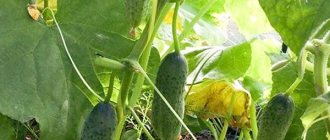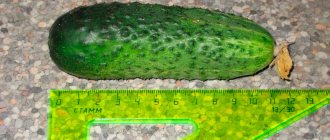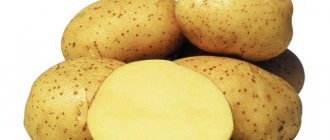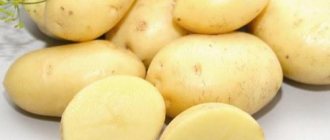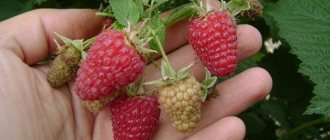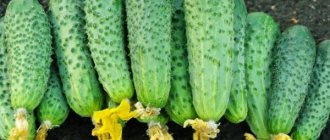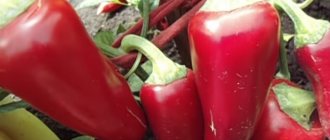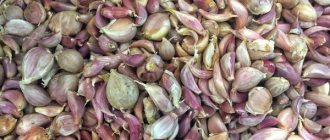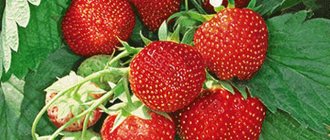Author's rating
Author of the article
Yakov Pavlovich
Professor, Head of the Department of Vegetable Growing
Articles written
153
Thanks to its long history of cultivation, the Far Eastern cucumber variety is still very popular among gardeners and farmers. The variety, bred in the 40s of the last century, is characterized by increased resistance to weather and climatic conditions. With proper and timely care, the vegetable crop will delight you with the yield and taste of the fruit.
Description and analysis of the variety
In order to avoid mistakes when growing Far Eastern cucumbers, you need to familiarize yourself with the characteristic varietal characteristics inherent in this vegetable crop:
- The plant has no endpoint of growth and requires timely pruning of shoots and formation of bushes.
- The leaf blades are characteristic of a vegetable crop and have a rich green hue.
- During the process of growth and development, plants tend to overgrow. Numerous young shoots negatively affect crop yields, so they are cut off.
- The first harvest of vegetables ripens 50 days after seed germination. Fruiting is extended, ending at the end of the summer season.
- Ripe vegetables are dark green in color, elongated in shape, covered with pimples. The average weight of one fruit is from 100 to 150 grams. During the ripening process, yellowish stripes appear on the vegetables.
- Beneath the thick, crispy skin is dense flesh with a small number of seeds.
- The taste of vegetables is characterized as excellent. The fruits are rarely bitter and are suitable for fresh consumption or storing for the winter.
- The harvested crop is subject to long-term storage and long-distance transportation.
Expert opinion
Stanislav Pavlovich
Gardener with 17 years of experience and our expert
Ask a Question
Important! Tall cucumber vines require additional support. Pegs or homemade trellises are used as support. In greenhouses and greenhouses, bushes are tied to ropes or fishing line.
It is also necessary to find out all the strengths and weaknesses of the varietal crop.
Advantages:
- The variety is resistant to climate and weather changes.
- Easily tolerates drought.
- It has a long fruiting period.
- The powerful rhizomes of the bushes easily take root and take root after being transferred to a permanent place of growth.
- The vegetable crop has natural immunity to downy mildew.
- Excellent taste characteristics of the ripened harvest.
- Possibility of universal use of fruits.
- With proper care, high yields.
Flaws:
- Although the variety has the ability to self-pollinate, in the absence of a sufficient number of bees, many barren flowers appear.
- The variety is prone to rapid overripening of fruits. Vegetables turn yellow, the skin thickens, and voids appear in the pulp.
Also, the disadvantages of the Dalnevostochny cucumber include the tendency to grow shoots, which creates many inconveniences when growing vegetables.
Advantages and disadvantages of a hybrid
A review from a professional vegetable grower states that the Far Eastern 27 cucumber is endowed with a large number of positive qualities. Among the main advantages of the variety, he highlights:
- long storage of fruits;
- frost resistance;
- high immunity to diseases;
- long fruiting;
- drought resistance;
- undemanding to climatic conditions;
- high yield.
It is also worth noting that the Dalnevostochny 27 variety has a developed powerful root system. Thanks to this, the plants take root well in their new location. There are no major deficiencies in the culture. However, beginners should know that the Dalnevostochny 27 variety requires timely harvesting. Otherwise, ripe fruits will quickly lose their commercial qualities.
In what regions can it be grown?
The Far Eastern cucumber variety was developed specifically for cultivation in unstable, cold climates.
The unpretentiousness to growing conditions obtained as a result of selection makes it possible to grow vegetable crops both in northern regions and in latitudes with a warm, southern climate.
Planting dates are determined based on weather conditions. In the south, it is possible to sow seeds immediately in open ground. In regions with cold climates, the seedling method of growing cucumbers of this variety is recommended.
History of the development of the Dalnevostochny variety
The Far Eastern cucumber is considered one of the oldest varieties of domestic selection. The history of the creation of culture goes back to the Second World War. In the 30s of the last century, breeder E. A. Gamayunova at the Far Eastern Research Institute, which is located in the Khabarovsk Territory, began using selection methods to improve the quality of local varieties of cucumber crops.
Thus, in 1943, several subspecies of cucumber were obtained, under the names Far Eastern 27 and Far Eastern 6. In 1950, these crops, having passed all the test work, were included in the State Register, after which their cultivation began in the Khabarovsk and Primorsky Territories.
Today, both varieties are grown throughout Russia. However, the Far Eastern cucumber 27 is considered a more popular subspecies.
How to choose and prepare seeds correctly
Seeds for growing seedlings are purchased in specialized stores or obtained independently from previous harvests.
Purchased planting material does not require additional preparation. Seeds collected independently before planting undergo special treatment. Seeds stored from the previous harvest are sorted out, removing spoiled, rotten or cracked specimens.
The remaining seeds are poured with a water-salt solution. Seed material unsuitable for planting floats to the surface, good seeds settle to the bottom of the container. Seeds suitable for planting are sent to warm up for 1.5-2 hours in an oven preheated to +50-60 degrees. Next, the seeds are treated with a solution of manganese and a growth stimulator.
Expert opinion
Stanislav Pavlovich
A gardener with 17 years of experience and our expert. See also: The most productive and best varieties of cucumbers for the Moscow region
Ask a Question
Advice! To quickly obtain seedlings, the seed is wrapped in a wet cloth and sent to a warm place. After a couple of days, the seeds germinate.
Growing Instructions
To obtain a harvest of fresh vegetables, several methods are used to grow cucumbers of the Dalnevostochny variety. If the seedless method of cultivating vegetables is suitable only for regions with warm climatic conditions, then other cultivation methods can be used without restrictions.
Seedling method
Fertile, loose soil is prepared for planting seeds. To do this, mix the soil with peat, humus, organic and mineral additives. Containers for planting seedlings are thoroughly washed. Prepared soil is poured into the container. Grooves are made on the surface of the soil, no deeper than 1-1.5 centimeters.
Seeds prepared for planting are placed in the grooves, maintaining a distance of 1.5 to 2 centimeters. The seed material is sprinkled with soil and moistened with a spray bottle.
Containers with plantings are covered with film and transferred to a bright, warm room. As soon as the first shoots appear, the film is removed.
At the age of 25-30 days, young plants are transferred to a permanent place of growth.
Seedless method
Before planting cucumbers using the seedless method, a hardening procedure is carried out on the seed material. The seeds are placed in a damp cloth and sent to a warm place. After swelling, the planting material is placed on the bottom shelf of the refrigerator for 48 hours.
Beds for growing cucumbers are prepared in the fall. The site for planting vegetables is chosen taking into account good lighting and the absence of drafts. Ash or lime is added to soil with a high acid content; the presence of groundwater is allowed no higher than 1.5-2 meters from the soil surface.
- The bed is carefully dug up and loosened.
- The soil is mixed with humus, organic and mineral fertilizers.
- Before planting, the bed is dug up again and moistened abundantly.
- In the prepared bed, planting holes are dug with a depth and width of 2 to 3 centimeters.
- The distance between plantings is 20-30 centimeters, between rows of beds up to 50 centimeters.
- Place 1 seed in each hole and add fertile soil.
- After the sprouts appear, the cucumbers are fed with nitrogen-containing organic matter and a mineral complex.
Expert opinion
Stanislav Pavlovich
Gardener with 17 years of experience and our expert
Ask a Question
Important! When preparing the beds, support structures are built that will subsequently support the cucumber vines.
On the windowsill
When growing cucumbers on a windowsill, loggias or balconies, special attention is paid to pruning and shaping the bushes. Also, when growing cucumbers at home, the manual method of plant pollination is used.
Otherwise, growing vegetables on a windowsill is no different from the seedling method of cultivating crops.
Growing cucumbers using the seedless method
When planting cucumbers directly in open ground, it is better to choose a well-lit area. However, it can also stay in light shade, for example, under sparse tree canopies.
As for their predecessors, it is better to plant cucumbers after potatoes, peppers, tomatoes, corn, onions, and peas. It is not advisable to plant “Amur F1” in a place where pumpkin crops previously grew. This is fraught with the development of diseases and infection with common pests.
The soil at the planting site should be loose, light, well-moistened, and neutral in acidity.
The land that is planned to be allocated for planting cucumbers must first be fertilized. So, in the fall, after collecting all the plant residues, dig up 1 square meter. m add manure (10 kg), potassium salt (25 g), superphosphate (40 g). In spring, fertilizing is carried out using ammonium nitrate (15–20 g). Immediately before planting, wood ash is placed in the holes.
You also need to water the soil for preventive purposes against ailments and harmful insects with a solution of copper sulfate - 1 tablespoon per 1 bucket of water. Working fluid consumption - 2 liters per 1 sq. m.
Seeds are planted in soil already warmed to +12 °C. Typically, this temperature is established in the second ten days of May in the middle zone and in early May in other regions.
Hardened and germinated seeds should be placed in pre-made holes to a depth of 2–4 cm, 2–3 pieces each.
Fill the holes and water them. Plantings must be covered with film to avoid the negative effects of low temperatures, to maintain optimal air humidity and to obtain vigorous shoots.
The film will need to be removed after the bulk of the shoots appear. After this, thinning will be required, which is done by pinching.
Rules for caring for crops
To get a high-quality vegetable harvest, cucumbers require proper care. Due to the lack of an endpoint of growth and the tendency to overgrow, the bushes need to be shaped and pruned.
Watering
Water the vegetable crop as needed, but at least 2 times every 6-8 days. Although the crop can tolerate short-term drought, during hot weather the amount of watering is increased. During the rainy season, irrigation activities are completely abandoned.
Expert opinion
Stanislav Pavlovich
Gardener with 17 years of experience and our expert
Ask a Question
Important! Water cucumbers of the Far Eastern variety with warm, settled water. Otherwise, there is a risk of root rot and fungal infections spreading.
Top dressing
Without adding additional nutrition to the soil, the yield of vegetable crops decreases. Therefore, cucumbers are fed throughout the growing season, alternating organic and mineral fertilizers.
Before the first buds appear, nitrogen-containing fertilizers are used. The use of such fertilizers accelerates the development of bushes and helps build up green mass. As soon as cucumbers enter the period of flowering and fruit ripening, nitrogen fertilizers are eliminated using mineral complexes based on potassium and phosphorus.
Advice! In order for beneficial substances to quickly penetrate the soil and reach the rhizomes of plants, fertilizing and fertilizing cucumbers is carried out in conjunction with irrigation work.
Formation
Tall vines require special attention to pruning and shaping the bushes. There should be no foliage or shoots on the lower part of the bush.
See also: What to do if cucumber seedlings are frozen
All fruiting branches are placed strictly vertically. Broken, affected shoots and empty ovaries are removed in a timely manner. The event is held at least once every 5-7 days.
To increase yield, pinch the top of the vine. When forming a bush, you should not move or move the vines to another place. Cucumbers react negatively to changes in the location of branches, so they will try to restore their previous positions.
Activities for pruning and shaping cucumber bushes are carried out exclusively with clean and sharp garden tools.
Prevention of diseases and pests
Even with natural immunity, Far Eastern cucumbers are affected by diseases and harmful insects. Usually, troubles arise due to improper care of vegetable crops or unacceptable weather conditions. High humidity causes root rot, which can destroy plants in a short time. Also, cucumbers are susceptible to powdery mildew.
To treat and prevent lesions, use professional protective equipment or folk recipes for preparing healing infusions.
Most often, cucumbers are attacked by aphids or spider mites. If the area of infection is small, use solutions prepared with soap, iodine or ammonia. In case of multiple infestation of a vegetable crop with harmful insects, the bushes are treated with insecticide-based preparations.
Also, as a preventive measure, calendula flowers, mint or garlic are planted next to the cucumber beds. Most harmful insects cannot tolerate the aroma of these plants, so beds with them are avoided.
Resistance to diseases and adverse conditions
The variety has good immunity, but is still susceptible to some diseases, such as powdery mildew, including downy and root rot. For the first one, it is recommended to use fungicides. With the second, it is necessary to reduce the volume of watering if the temperature is not higher than 15°C. With the latter, you need to dig up the diseased bush and burn it, and treat the place where it grows with copper sulfate (copper sulfate).
There are insect pests that can harm cucumbers:
- aphid;
- spider mite;
- root-knot nematode.
To protect against aphids, plant dill near cucumber bushes, which attracts ladybugs that feed on aphids. They also use a solution of water with garlic, which is used to spray the bushes. It is possible to kill spider mites with insecticides.
Winter loosening of the soil will help cope with nematodes, which will lead to their freezing. And in a greenhouse you can water the soil with boiling water.
Solving Common Problems
The main problems when growing vegetables arise when the rules for caring for cucumbers are violated.
To avoid the formation of voids in the fruit pulp, it is necessary to harvest the ripe cucumber crop on time. Also, overripe fruits lose their presentation, although this does not affect the taste characteristics.
If there are no pollinating insects near the garden plot, the procedure for pollinating the bushes is carried out manually. To do this, take a regular painting brush and carefully brush it over each blossoming flower. The procedure is performed daily throughout the flowering period.
The main fungal and viral infections arise as a result of agricultural technology errors. Excessive watering, non-compliance with crop rotation rules, lack or excess of fertilizers, and this is not the list of mistakes that negatively affect the growth and fruiting of cucumbers.
Reviews
Victor Ilyich. Krasnodar region. I have been growing Far Eastern cucumbers on my plot for many years. An excellent variety, it has never failed, they always get a good harvest. The maximum harvest was 3 years ago. Then, from 1 square meter of bed it was possible to collect 6 kilograms of vegetables. These cucumbers are best consumed in canned form. When prepared, they are crispy and very tasty.
Yulia Ivanovna. Tomsk Our climate is harsh and not at all suitable for growing early vegetables. But cucumbers of the Far Eastern variety manage to ripen if the seedlings are planted on time. I grow this variety in open ground. The vegetable crop is unpretentious in care, but requires constant monitoring of shoots. We use the harvest fresh or preserve it for the winter.
Previous
CucumbersHow to properly feed cucumbers with urea
Next
Cucumbers: Subtleties of growing, description and characteristics of cucumbers of the Graceful variety
Fruit characteristics
Cucumbers of the described variety are characterized by the usual elongated elliptical shape. The length of green cucumbers reaches 11-15 cm, while the average weight of one cucumber is 100-200 grams.
The peel of cucumbers is medium thick, green in color with longitudinal light stripes and a slight waxy coating. The fruits of the Far Eastern 27 cucumber are evenly covered with fairly large tubercles. Zelentsy are characterized by black spines and sparse pubescence.
Far Eastern cucumbers are distinguished by high taste and are perfect for both fresh consumption and for pickling, pickling and other winter preparations.
